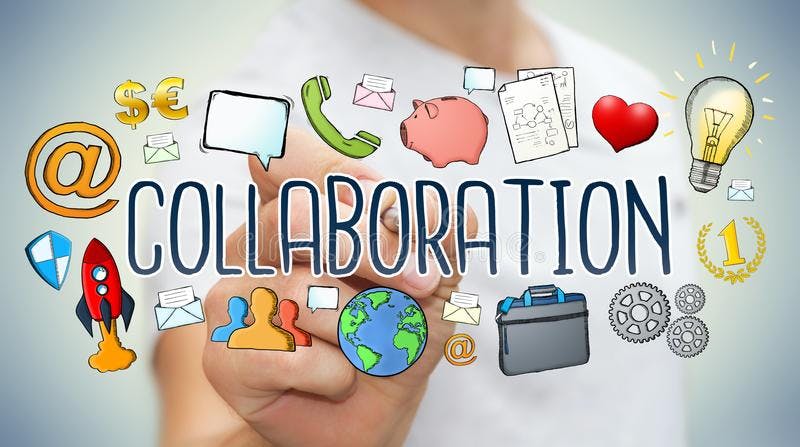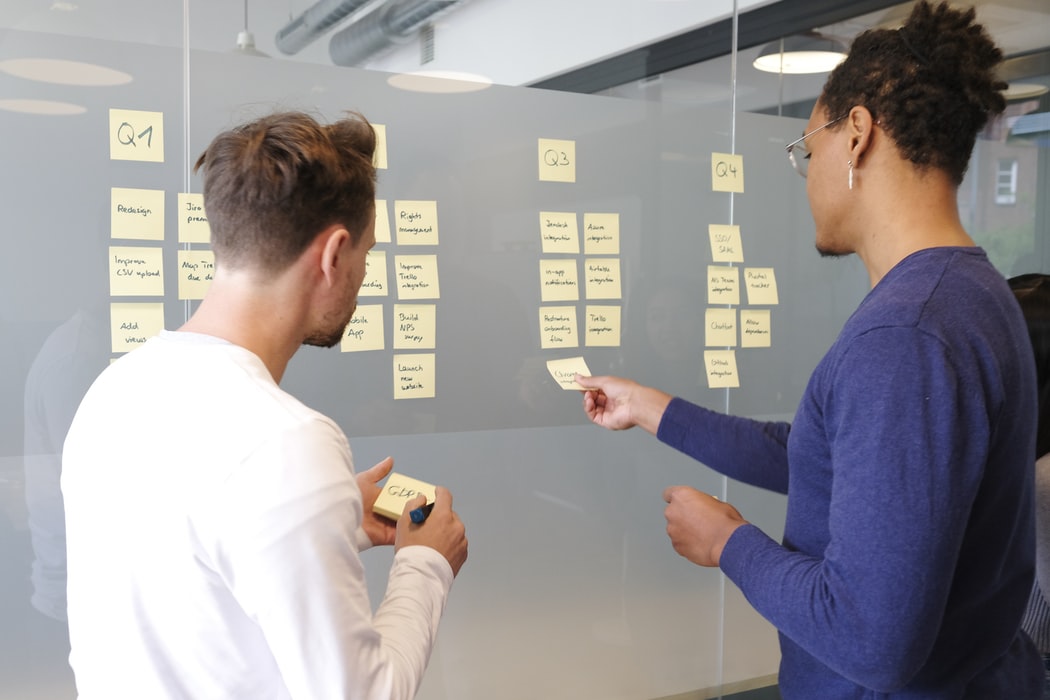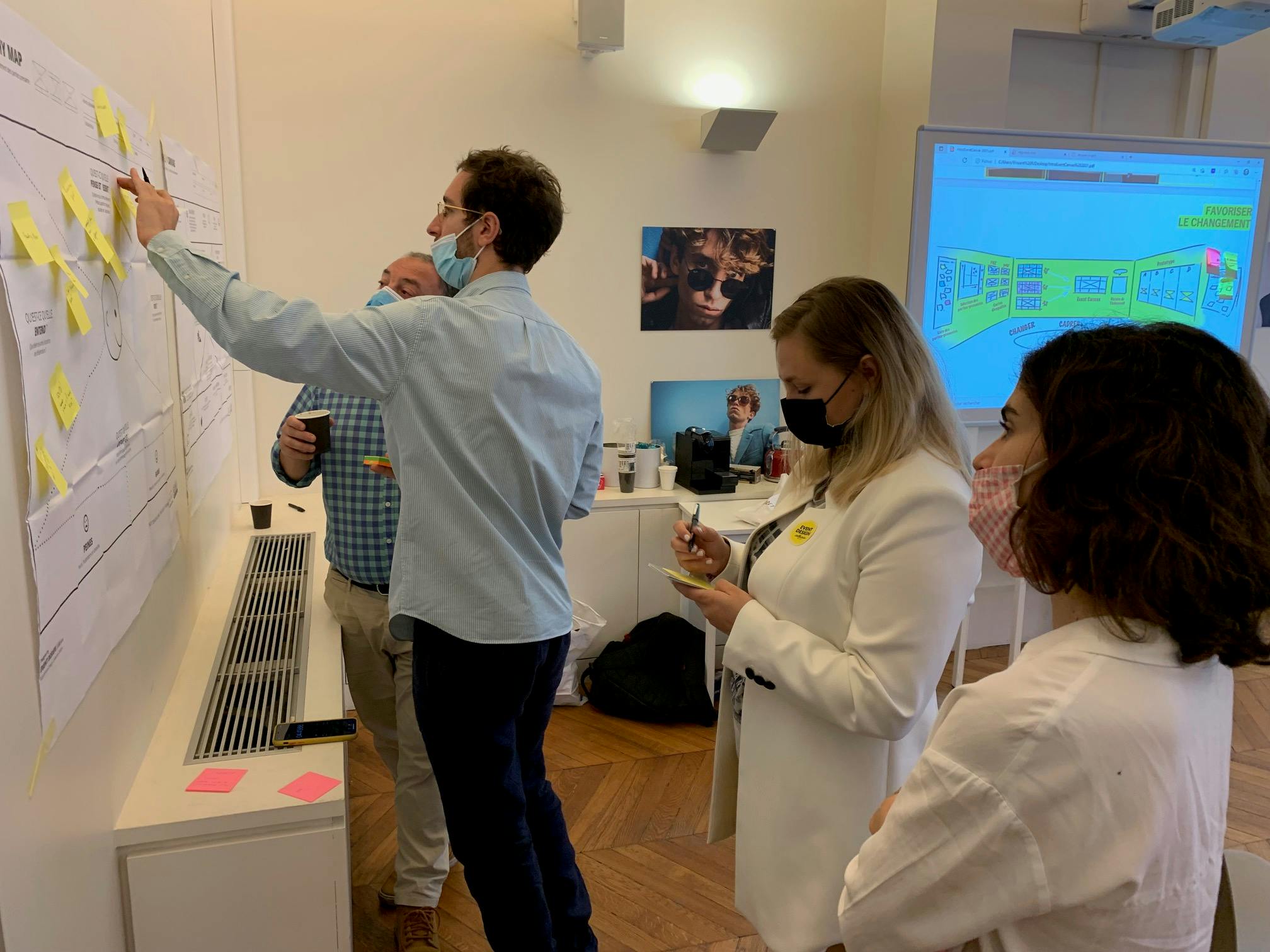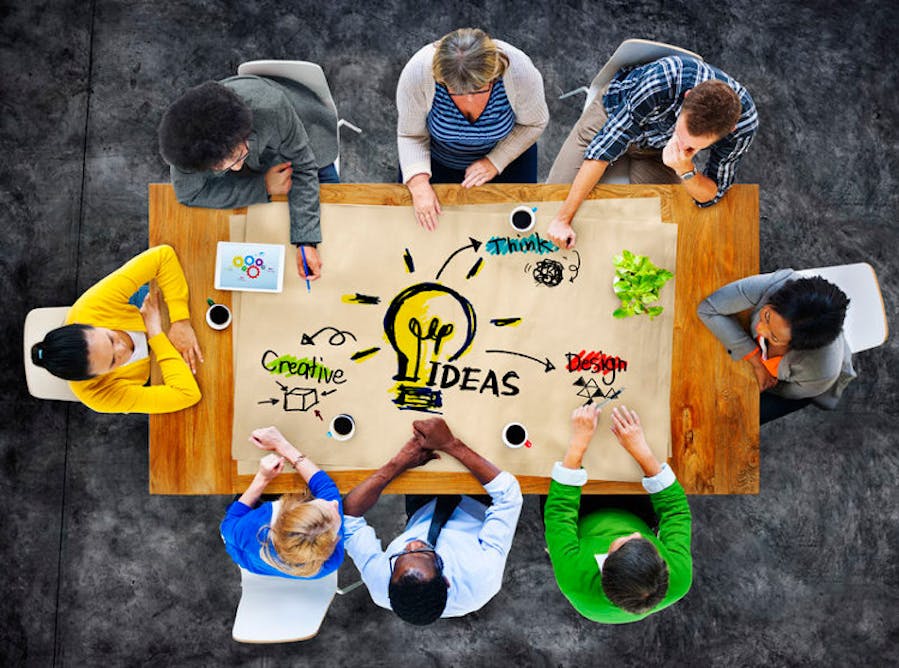"Alone we go faster, together we go farther!” This phrase perfectly represents the major challenge that collective intelligence represents for the design of events. With respect to the stakeholders and in an empathetic and listening spirit, collective intelligence brings out innovative and quality ideas.

1. Inspire - collaborate - have fun
During a pandemic, it can sometimes be difficult to keep your creative juices flowing. Working together on projects and bouncing ideas off of one another can result in original and impactful collaborations. We all have something to learn from each other. Let's remember (just in case we've forgotten) that our jobs are based on relationships and exchange.
The key to success, through various methods, is in combining the power of teamwork with individual strengths. It's important that each individual feels heard and that group interactions result in the best of everyone's ideas being used. The involvement of stakeholders helps to strengthen the commitment of the participants and to prevent tensions. So remember: get inspired, get collaborative, and have fun!
Collective intelligence also allows you to gather qualitative content, which helps the storytelling of your event. It's essential that your content tells a story or has a coherent thread. This creates the most compelling content for participants before, during, and after the event.
👉 Create a series of impactful hooks to entice readers and consumers of your content. Hooks can use a play on words, important stats or numbers, scoop, or they can deliver a piece of information that is personal to your company and will show readers who you are.
2. Methodologies
👉 Brainstorming & brainwrinting
To activate a good collective intelligence ideation process, you should start with an individual brainstorming phase.
The cousin of brainstorming: brainwriting. You write your idea on a post-it note (physical or virtual) and you pass it to your neighbor, who will then bounce back on the idea and improve upon it.
To go a step further, you can give constraints to a brainwriting session (budget, sector of activity, etc.) so that people come up with ideas about a specific topic and get out of their comfort zone.
👉 Open forum
The open forum (or world café method) also requires input from others to improve the quality of ideas. Collaborators can choose a particular theme to discuss. For example, the group can try and tackle a specific problem, produce quality ideas, sort through them, prioritize, and propose an action plan. The group can only implement the collaborated proposals since everyone will have had their ideas heard. It is a good way to teach each stakeholder to work in a group, with the personalities and ideas of everyone.
👉 Design thinking
The last method is design thinking. It allows you to develop innovative products and services by placing the consumer's needs above all else. This process gives a framework to use throughout the course of the project. Here are the 3 main steps:
- Immersion: we interview users and try to understand their expectations.
- Ideation: we are inspired by everything that surrounds us (videos, photos...) and we give all the ideas that come to mind (same principle as brainstorming).
- Prototyping and testing: we keep the best ideas and we go into project mode. To do this, we use shadowing, a technique that consists of testing the project with participants to verify if it works well and meets expectations. Remember to always take into account the context of a project's use. During each step, you must check that the initial problem has not changed.
3. Organize a collaborative workshop: find a solution to a problem together

Organizing a collaborative workshop will allow you to identify the key elements of an understandable, useful, and effective action plan and to make sure that you have not forgotten anything. To do this, it is important that you position yourself as a mediator, so that you benefit from the participants' field experience while verifying the feasibility of the project, and boosting your creativity using collective intelligence.
Discover the few steps:
👉 Consolidate information: individually, take ownership of the context, and try to understand the source of the problem. Before defining and implementing solutions, make sure you have completed the previous steps and share a summary with participants.
👉 Identify the issues: the problem(s) will allow you to define an action plan. The formulation must be SMART: specific, measurable, ambitious, realistic, and timely.
Also, individually, for each issue you can then:
● Analyze the conditions, the pros, and the cons.
● Check what has already been tried internally or in similar structures.
● Think about a specific objective you would like to achieve.
● What are the resources you can rely on and what are the constraints to manage?
● Prepare the necessary documents (maps, legal texts, etc.)
👉 Prepare the workshop content:
A. Invitations & communications: choose the scope of participants you have selected: strangers, relatives, colleagues, external stakeholders and inform them of the place, date, and theme of your workshop.
B. Methodologies: get an external facilitator to explain the rules and agenda, help you with the facilitation of the workshop, and make sure to set a creative and constructive atmosphere throughout the workshop
👥 Some tips for creating a creative atmosphere:
● Ideas should be just a few words
● Participants should bounce off each other's ideas but do not comment or judge them
● Everyone writes down and shares their ideas one by one.
C. Prepare the workspace: arrive early so that you are calm and relaxed when others arrive. For set-up, make sure you have a large table with chairs for everyone. A circle arrangement is best.
D. Introduction: give a 10-minute presentation to your group detailing your vision, the goal and objectives of the day, the context, the stakeholders, and the solutions you have already thought of.
👉 Conduct the workshop and facilitate discussion:
A. Discussion phase: help unlock participants' creativity by making them feel comfortable to share ideas from their personal experience and perspectives and prepare some questions to keep the discussion moving. This phase should be dynamic and respectful of everyone. Feel free to write down some ideas on a flip chart.
B. Division into small groups: divide the group into sub-groups and check in with them to make sure everything is going well.
C. Presentation of each group's ideas: one person from each group presents the results of their work to the audience for 5 minutes.
D. Discussion phase: take the floor to summarize the major ideas and try to propose several solutions that could answer the basic problem.
✍️ Materials needed:
● Post-its/eco-Post-its
● Pens/pencils
● Cardboard or whiteboard or chalkboard
E. End: thank participants before they leave, and collect their email to thank them afterward for their contribution, present them with the solutions produced (focus on visuals), and share photos/videos of the workshop.
4. Back to July 8th with Luxe & Événement: a great example of collective intelligence

We had a great time on this superb day of training and collaborative work with the Event Canvas methodology, alongside Jon Lipfeld, Lucien Derhy & Vincent Roux. Collective intelligence was fully in the spotlight and at the heart of the exchanges!
A real case study was discussed: "Undisclosed" for the next Fashion week with a hybrid event of more than 2,000 participants in person.
Delphine Schaack, Assistant Director of L'Atelier JAM Production & Scénographie Culturelle Collaboration Artistique gives us her feedback:
"The Event Canvas training during the Luxe&Evénement event on July 8th was very enriching because of the group dynamics and the interest of the project. Constructive and benevolent exchanges."
📩 Contact : contact@vincentrouxconsulting.fr / 06.26.03.38.32

